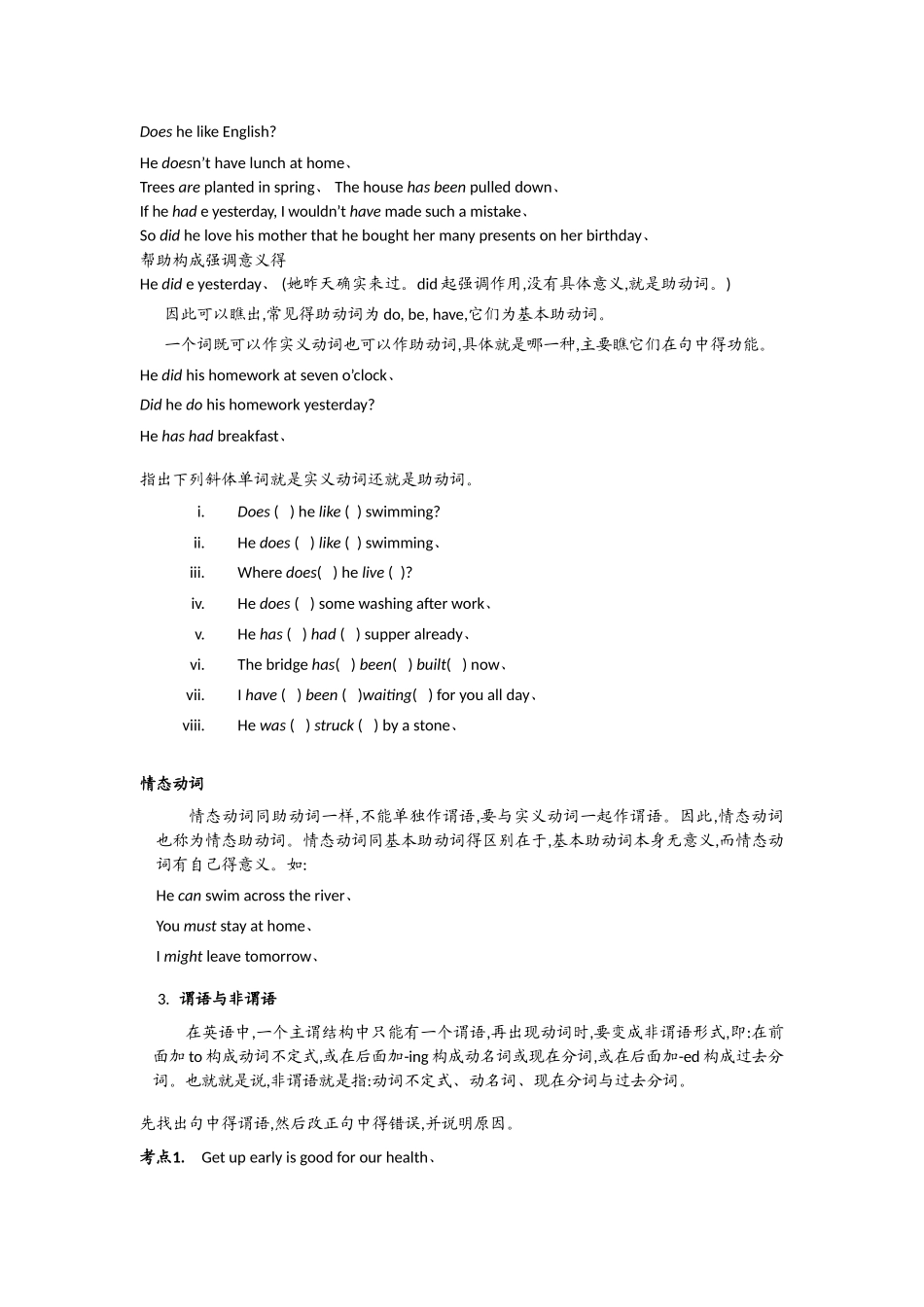句子结构及成分1. 及物动词与不及物动词实义动词后面跟宾语时,这个动词就是及物动词。实义动词后面不跟宾语时,此时这个动词就是不及物动词。The door opened、 He opened the door、The meeting began at six、 < vi、>We began the meeting at six、 < vt、>指出下列句中斜体动词就是及物动词还就是不及物动词,及物动词填 vt、,不及物填 vi、。考点1.Most birds can fly、( )考点2.The children are flying kites in the park、 ( )考点3.It happened yesterday、( )考点4.My watch stopped、( )考点5.The baby stopped crying when he saw his mother、 ( )考点6.She spoke at the meeting this morning、 ( )考点7.Shall I begin at once?( )考点8.She began working as a teacher after she left school、( )( )考点9.When did they leave Beijing?( )考点10. They left last week、 ( )2. 实义动词、助动词与情态动词实义动词与助动词就是根据动词在句子中得含义与作用来划分得。实义动词也叫行为动词。实义动词指得就是那些意义完全且能够独立作谓语得动词。如:He lives quite near、 (live“住”,有明确得意义,单独作谓语,为实义动词。)I like reading、 (like “喜爱”,意思明确,单独作谓语,为实义动词。)I bought a pen yesterday、 (bought “买”,意义明确,单独作谓语,为实义动词。)助动词助动词得“助”就是“帮助”之意。因此,助动词就是指那些用来帮助构成时态、语态、虚拟语气、疑问句、否定句、倒装句与帮助强调得词。这些词本身无词汇意义或意义不完全,不能单独作谓语。帮助构成时态得:The boy is crying、He has arrived、 I have been painting all day、 Does he like English?He doesn’t have lunch at home、Trees are planted in spring、 The house has been pulled down、 If he had e yesterday, I wouldn’t have made such a mistake、So did he love his mother that he bought her many presents on her birthday、帮助构成强调意义得He did e yesterday、 (她昨天确实来过。did 起强调作用,没有具体意义,就是助动词。)因此可以瞧出,常见得助动词为 do, be, have,它们为基本助动词。一个词既可以作实义动词也可以作助动词,具体就是哪一种...


